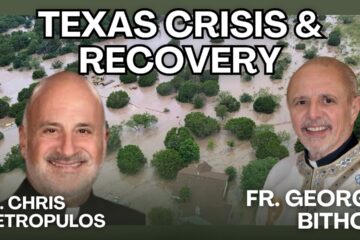Not long ago, I read an article in the Wall Street Journal titled “Turkey Retreats from Modernity.”[1] In the article, Charlotte Allen makes the ominous observation that Islamic Turkey seems to take their religion more seriously than does the Christian West.
In evidence, Friday, July 24, 2020, marked the end of Turkey’s experiment with secular modernity. On this day regular Islamic services once again resumed in the capital’s Hagia Sophia. Allen reminds her readers that this 1500-year-old architectural marvel completed in 537 was the central cathedral of Greek Orthodox Christianity for almost a millennium, after which the invading Ottoman Turks changed it into a mosque in the year 1453.[2]
The Turks not only conquered Constantinople but looted Hagia Sophia’s incomparable icons and magnificent mosaics. Sacred artifacts depicting Christ, the Mother of God, angelic beings, and Christian saints. “Until recently,” writes Allen, visitors to Hagia Sophia “still could experience the religious feelings of the Byzantine Greeks as they observed the light playing along the church’s marble floor and multicolored columns and facings.” And experience what has been aptly described as the “Sound, Space and Spirit” — “the shimmering marble a kind of icon of the Holy Spirit ‘hovering over the primordial ocean.’” As of July 24, however, the reverberant acoustics are muted by the prayer rugs of Islamic devotees.[3]
While the transition from museum to mosque has been met with little more than yawns in the post-Christian West, in the Muslim world there’s a yearning. An eager expectation that a civilization that has become Islamic demographically will inevitably succumb to Islam politically as well.[4] If contrast is the conduit to clarity — and it most certainly is — what is desperately needed now is a Christian response to the Muslim expansionism exemplified by the transformation of the once resplendent Hagia Sophia from an icon of worship to a museum and now to a mosque.
First, it is incumbent upon Christians to contrast the beauty of Christ as exemplified by Hagia Sophia with the belligerence of Muhammad who promised his men earthly goods and an eternity in the graces of houris.[5] Moreover, scarcely three years after he had slaughtered the Jews of Khaybar,[6] was dead in the arms of a woman he married when she was but six.[7]
The contrast between Messiah and Muhammad could not be starker. Christ elevated females to ontological equality with men and taught followers the principles of a kingdom that would never end.[8] He commanded devotees to love their enemies and pray for their persecutors.[9] He instructed His disciples to turn the other cheek[10] — to be peacemakers rather than makers of war.[11] He defended the downtrodden and condemned the self-righteous.[12] He set the ultimate moral example by dying so that others might live.[13]
Second, Christians must be equipped to communicate the transcendent differences between the Bible and the Qur’an. Flawless ethics and factual evidence demonstrate the Bible to be divine rather than merely human in origin. Faulty ethics, factual errors, and feigned eloquence demonstrate that the Qur’an is a mere counterfeit.[14]
Third, we do well to remember the contrast between advancing by word or expanding by sword. When a disciple of Christ struck a soldier with his sword, Jesus said to him, “Put your sword in its place, for all who draw the sword will die by the sword.”[15] Conversely, the law of Allah historically advances by sword. This is the way of Allah who ominously exhorts Islamic devotees to “fight and slay the Pagans wherever ye find them, and seize them, beleaguer them, and lie in wait for them in every stratagem (of war).”[16]
Islam is the only significant religious system in the history of the human race with a sociopolitical structure of law that mandates violence against the infidel. This graphic global reality makes Islam a religious ideology espousing terrorism as a permanent policy rather than as a temporary expedient.[17] Such is historical reality, from the early seventh-century Medina massacres to the 9/11 Manhattan Massacre[18] — a massacre in which St. Nicholas Greek Orthodox Church at Ground Zero was obliterated.
Rather than curse the darkness, or retaliate, Orthodox Christians — in concert with the message of Messiah — embarked upon building a lighthouse in the midst of the storm. And now arising out of the ash and debris is the incomparable St. Nicholas Greek Orthodox National Shrine. Paradoxically, just as Hagia Sophia is in process of completing its transition from museum to mosque, St. Nicholas is in its final stages of completion. And in God’s eternal providence, the resplendent Shrine has been gloriously patterned after the image of Hagia Sophia, the Holy Wisdom of the Logos—that is of Christ, the second hypostasis of the Holy Trinity.
In the next decade, an estimated fifty million will visit this glorious testation to Christ.[19] The Shrine’s “40 clearstory windows are in recognition of the 40 windows in the dome of Hagia Sophia.” “The spatial arrangement is based on a traditional sequence of Orthodox liturgical spaces.” “The Nave of St. Nicholas Church is under the all-embracing span of a central dome, which represents Christ, Ruler of the Universe.”[20]
As luminous as the architecture itself is the tradition and hospitality that the St. Nicholas Church exemplifies as the only non-secular building at Ground Zero.[21] It serves as an enduring reminder of St. Nicholas of Myra, who lavished gifts on needy children and valiantly championed the doctrine of the Trinity at the Council of Nicaea in AD 325. Saint Nicholas is not only a model of living faith and an image of humble grace but is a reminder of a time in which the river of life was as yet unpolluted. A time when the church was young. A time when Christians were unified in one apostolic Faith and Tradition.
His all-holiness Ecumenical Patriarch Bartholomew I of Constantinople summed up the mission of the Saint Nicholas National Shrine by highlighting the “direct link between the oneness of Christians, after the image of the Trinity, and the missionary dimension of the Church.”[22]
The Church looks not inward but outward. It exists not for the sake of itself but for the sake of the world’s salvation. The Church, as a mystery of mutual Trinitarian love, is true to itself only if the circle of love is being constantly enlarged, only if new persons are continually being brought within it. Faith in the Triune God signifies that we are each of us missionaries, dedicated to the preaching of the Gospel.[23]
The rebuilding of the Saint Nicholas Shrine at Ground Zero provides us with yet another glimmer of hope. Hope that Christians in the West may once again take the only true and transformational faith as seriously as Turkey takes the Islamic counterfeit. For should that happen, we may well experience a second iteration of Pentecost. The sound from heaven. The mighty rushing wind. The baptism of the Holy Spirit and fire. The manifestation of the uncreated, inexhaustible energy supply that alone is sufficient to save the world.
During the first iteration of Pentecost, the growth of the Christian church was quite simply beyond the pale. Within an astonishingly short time frame, eucharistic assemblies appeared as if by magic throughout the Roman Empire.[24] As you read through the current edition of the Christian Research Journal, may you be equipped and edified by such articles as “Lessons for Today’s Church from the Life of the Early Church.” And may you be empowered by an unlimited flow of divine energy by which to provide life and light to the world. For this is the essential mission of the Journal: “Equipping You to Exercise Truth and Experience Life.” As the erudite Vladimir Lossky has well said, “Christian theology is always in the last resort a means: a unity of knowledge subserving an end which transcends all knowledge. This ultimate end is union with God or deification.”[25] —Hank Hanegraaff
[1] Charlotte Allen, “Turkey Retreats from Modernity,” Wall Street Journal, July 23, 2020, https://www.wsj.com/articles/turkey-retreats-from-modernity-11595545661.
[2] Allen, “Turkey Retreats from Modernity.”
[3] Allen, “Turkey Retreats from Modernity.”
[4] Hank Hanegraaff, MUSLIM: What You Need to Know about the World’s Fastest-Growing Religion (Nashville: W Publishing Group, 2017), xix.
[5] See Qur’an 8:41 and 56:22–23.
[6] See Hanegraaff, MUSLIM, 16–18.
[7] See Hanegraaff, MUSLIM, 20–23. See Sahih al-Bukhari 7.62.144 and 7.62.64 (see also 7.62.65 and 7.62.88).
[8] See Hanegraaff, MUSLIM, 221 (notes 118 and 119).
[9] See Matthew 5:43–48; Luke 6:27–36.
[10] See Matthew 5:39.
[11] See Matthew 5:9.
[12] See Matthew 11:28–29 and Matthew 23.
[13] See especially Mark 10:45; John 15:13; Romans 5:6; 8:32; Ephesians 5:2; Titus 2:14. Paragraph adapted from Hanegraaff, MUSLIM, 23.
[14] See Hanegraaff, MUSLIM, chapter 2.
[15] Matthew 26:52 NIV.
[16] Qur’an 9:5 (Abdullah Yusuf Ali, The Meaning of the Holy Qur’an, tenth ed. [Beltsville, MD: Amana, 1999, 2001], 438).
[17] In the first two sentences of this paragraph, I paraphrase Serge Trifkovic, Defeating Jihad: How the War on Terrorism Can Be Won — In Spite of Ourselves (Boston: Regina Orthodox Press, 2006), 57.
[18] Adapted from Hanegraaff, MUSLIM, xiv.
[19] Archbishop Demetrios of America, in Santiago Calatrava, Saint Nicholas Greek Orthodox National Shrine: At Ground Zero—The World Trade Center.
[20] Calatrava, Saint Nicholas Greek Orthodox National Shrine, Introduction.
[21] Calatrava, Saint Nicholas Greek Orthodox National Shrine, Introduction.
[22] Sermon of His All Holiness Ecumenical Patriarch Bartholomew, Uppsala Cathedral, August 22, 1993, quoted in Thomas FitzGerald, The Ecumenical Patriarchate and Christian Unity, 3rd rev. ed. (Brookline: MA: Holy Cross Orthodox Press, 2009), 47.
[23] Sermon of His All Holiness Ecumenical Patriarch Bartholomew, 47.
[24] Adapted from Hank Hanegraaff, Truth Matters, Life Matters More: The Unexpected Beauty of an Authentic Christian Life (Nashville: W Publishing Group, 2019), 192.
[25] Vladimir Lossky, The Mystical Theology of the Eastern Church, trans. Fellowship of St. Alban and St. Sergius (1976; repr., Crestwood, NY: St. Vladimir’s Seminary Press, 2002), 9.



0 Comments